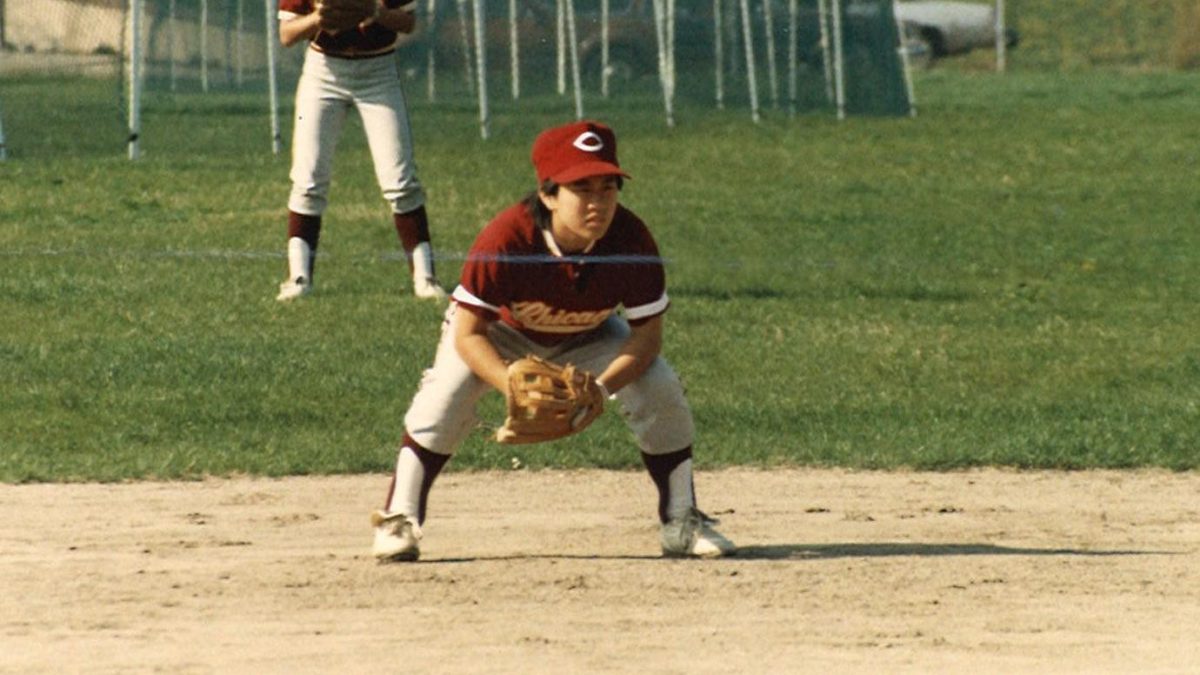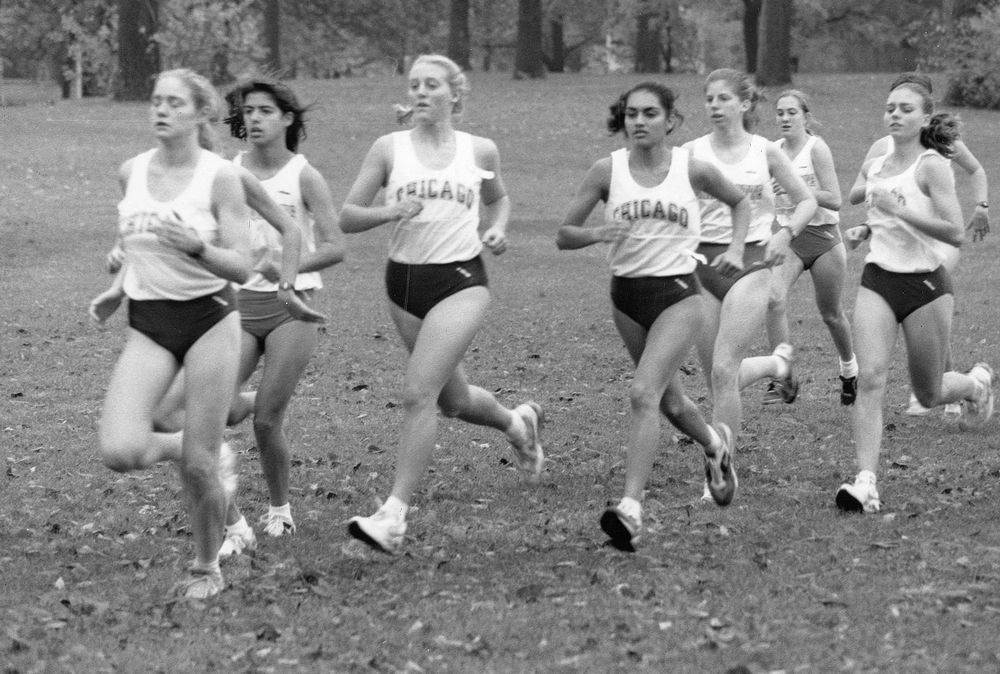Losing the best passer in the team’s modern history to graduation can severely change the outlook and character of a team. Losing the four defensive line starters is an equally traumatic change. Three games into its up-and-down 2003 campaign, the University of Chicago football team’s play has reflected a season of big adjustments.
Out is quarterback Josh Dunn, who holds modern-era school passing records in yards, completions, attempts, touchdowns, and completion percentage. In his place is third-year Tony Pulice, who had only 14 career attempts before being named the starter for this season. Head coach Dick Maloney’s old 4-3 defensive scheme has also been replaced. The defense has taken on a more aggressive style focused on putting pressure on the opposing team with a three-linemen, three-linebackers, and five-secondary player set-up. Maloney has also adjusted the offensive style of play to emphasize getting the ball to receivers and backs in the open field.
“Experience playing the defense will help us improve in the coming weeks. Anytime you do something new, there is a learning curve from a coaching and playing standpoint in figuring out what the offenses want to do to you. We’re learning how to take advantage of different situations,” Maloney said.
“Offensively, we’re putting guys in motion and trying to make quick reads because what happened in the last two games is that our opponents blitzed us. You have to make that quick decision, and the ball has to get to the right place. We had a little success with that this past week, and we’re trying to get more experience to build on that.”
Despite all of the major changes, a good part of the offensive starters remain.
Fourth-year Jim Raptis returns at wide receiver, where he has already established modern-era school records in receiving yards and receptions.
Preseason All-American tight end Mike Healy returns for his fourth year after posting 47 receptions last year, a school record at the position. Fourth-year running backs Aaron Carlock and Sam Owens round out a potentially strong offensive attack that thrived last year en route to an average of 27.4 points per game.
Last year’s Maroons went 4-5, just missing having a winning record for the sixth consecutive year. That team was 24th in the country in offensive yards per game (425.9) but struggled to contain opposing teams’ offenses.
This year’s story, however, has been significantly different. The Maroons are once again one game under .500 at 1-2, but they are staying in games with their defense, which is yielding a touchdown less per game this year and has forced turnovers at a rate greater than in 2002. The new defensive scheme has resulted in eight more tackles for losses than all of last year, which has helped the defense keep control of the game. With some players switching over from the offensive side to the defensive, the Maroons have been applying heavy pressure on opponents with their athleticism.
“This defense was made for defensive personnel like ours. It takes advantage of everyone’s speed and sends lots of pressure to the point of attack. The increase in blitzing has really helped our defense make big plays and influence the momentum of the game,” said second-year nose tackle Rob Tamillow.
With only one fourth-year starting on defense—cornerback Nate Harrell, who was named to D3football.com’s Division III Team of the Week for his 12 tackles and an interception return for a touchdown against Illinois Wesleyan—the team has had to rely on its young core of players.
“With only one senior on defense, lots of young starters, and a new defense being put in, I thought we would have some adjustment problems. But we have gelled as a unit and have been playing very well, creating turnovers and forcing three and outs, but there is still room for improvement,” Harrell said.
The offense, on the other hand, has stumbled out of the gate with just over half the offensive yards per game the 2002 team had. While most of the offense stayed the same, getting the new and old players to execute plays properly as a unit is yet to come.
“The biggest problem has been trying to get everyone on the same page and firing on all cylinders at the same time. We remain very experienced and the guys have had to adjust to a new signal caller this year in me,” Pulice said.
“We have implemented many new passing and running plays this year in order to keep the defense on their toes. It has worked effectively, but not quite effectively enough.”
The team recognizes that the offense is a work in progress, and is trying to build together and make the necessary adjustments: “Some of the problem is that we had very high expectations. We thought we could do a lot of the same things we did last year, but with a new quarterback in Tony, who is doing an adequate job and will be a very good quarterback, the offense is just not as automatic. So everyone needs to be more efficient, work harder, and rally around Tony. We understand that it’s going to take a while,” Maloney said.
After the first game against North Park, a 41-7 road victory, the offense seemed like it would be clicking once again. Halfbacks Sam Owens and Frank Brown combined for four rushing touchdowns, and Pulice went 11 for 19 passing while adding his own scoring run. The next game against Elmhurst, however, exposed the flaws in the Maroons’ offense as they struggled to move the ball. The offense had only four first downs and 73 total yards over 60 plays in the 23-0 loss at home.
Last Saturday’s game was a step back in the right direction, as Pulice threw his first touchdown pass of the year to Carlock, who also added a rushing touchdown. Harrell’s interception return put the Maroons up 14-7 going into the half, but the defense couldn’t hold the Wesleyan offense from there.
Quarterback Eric White and wide receiver Steve Lucas hooked up three times in the end zone in the second half, giving Wesleyan a 30-21 victory.
“Against Wesleyan we said that we needed to get the ball to our receivers and running backs in the open as much as possible. This last game, Jim Raptis made a lot of catches that helped our offense out. We are currently trying to figure out how to get our All-American tight end Mike Healy the football more often. Same with getting the ball to our other receivers and running backs in the open to make things happen,” Maloney said.
The Maroons are looking to take a big step from the work-in-progress that they have been when they face DePauw (2-2) in Greencastle, Indiana this weekend. DePauw has an effective offense like Wesleyan, although they play in a unique style that involves a lot of no-huddle plays to adjust to the defense. Expecting a weaker receiving corps, the Maroons are planning on once again heavily blitzing and relying on their athletic secondary to keep the completions to a minimum.
The team knows that to achieve their goal of winning the UAA conference this year they will have to put together a complete effort soon. “Last year, the defense wasn’t playing as well as we are now, and the offense picked up the slack and helped us out,” Harrell said. “We are trying to do the same this year, but I have no doubt that our offense will come around.”









